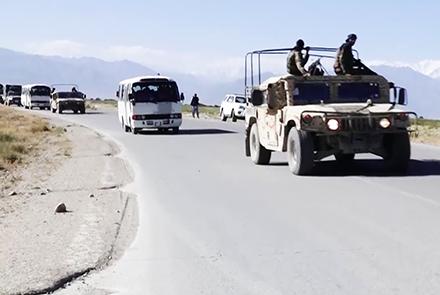Afghan Govt, Taliban Talks Continue on Release of Prisoners
In a reciprocal move, the Taliban also released at least 80 government hostages in Baghlan and Kunduz provinces.
by Sayed Sharif Amiri
Representatives of the Afghan government met with a five-member Taliban technical delegation for the second time in Kabul on Friday to discuss the issue of the release of prisoners, aimed at jump-starting a floundering peace process. Violent incidents have occurred around the country despite the unannounced ceasefire that has continued after Eid.
The Afghan government has said that the main purpose of the release of Taliban prisoners is to persuade the resurgent movement to agree to the ceasefire in order to continue and to cement solid steps for the intra-Afghan talks.
In a reciprocal move, the Taliban also released at least 80 government hostages in Baghlan and Kunduz provinces.
This comes hours after at least 14 members of the Afghan Border Force were killed in an attack by the Taliban in Dand-e-Patan district in the eastern province of Paktia on Thursday evening, despite a ceasefire that continues between the two sides.
On Thursday, sources within the Afghan government and the Taliban said an "unannounced ceasefire" has been in place since May 27 and will remain in effect for the next several days, but reports indicate that the three clashes occurred in Zabul, Farah and Parwan on Thursday.
The Eid ceasefire--from May 24 to May 26-- was announced by the Taliban and reciprocated by the Afghan government, and, according to figures provided by the Afghan Independent Human Rights Commission, civilian casualties dropped by 80 percent.
On Saturday, President Ghani, in response to the Taliban’s announcement of a three-day Eid ceasefire, pledged to release 2,000 Taliban prisoners as a goodwill gesture to help persuade the group to come to the peace talks.
The Taliban continues to demand the release of their 5,000 inmates jailed by the Afghan government, which was mentioned in the US-Taliban peace agreement signed in Doha on February 29. The agreement called for the Taliban to release 1,000 detained Afghan security force members.
The five-member delegation from the Taliban arrived in Kabul on Thursday.
Sources close to the Taliban have said that one of the core purposes of the arrival of the Taliban delegation in Kabul is to finalize the release of 3,500 prisoners.
Under the US-Taliban peace agreement, which was signed between the two sides in Doha in February, the Taliban demanded the release of its 5,000 fighters from Afghan government prisons.
“This will help the peace process and to further consolidate the confidence building measures. This will also help to pave the way for the intra-Afghan talks. It is hoped that with the completion of the release of prisoners, the intra-Afghan talks will also start,” said Faiz Mohammad Zaland, a political analyst in Kabul.
“Someone by the name of Mawlavi Ziauddin is leading the delegation (Taliban delegation), he also visited Pul-e-Charkhi jail yesterday and he is here to hold talks and assess the issue of prisoners,” said Sayed Akbar Agha, a former Taliban commander.
Meanwhile, the Afghan Independent Human Rights Commission (AIHRC) has said that the body still has some reservations on the issue of the release of Taliban prisoners.
“What will the issue be of war victims who seek justice? Secondly, there are questions on the legal aspects of the process, thirdly, what will they (Taliban inmates) do after their release,” said Zabiullah Farhang, the head of the media department of the human rights commission.
What residents say:
“There is a need to provide them with jobs, it must be realized that their political leaders are also struggling for a political solution,” said Mohammad Idris, a resident in Kabul.
“What is the guarantee that they will not return to the battlefields after being released?” asked Dur Mohammad Watandost, a resident in Kabul.
The Afghan government has so far released 2,000 Taliban inmates from the jails.